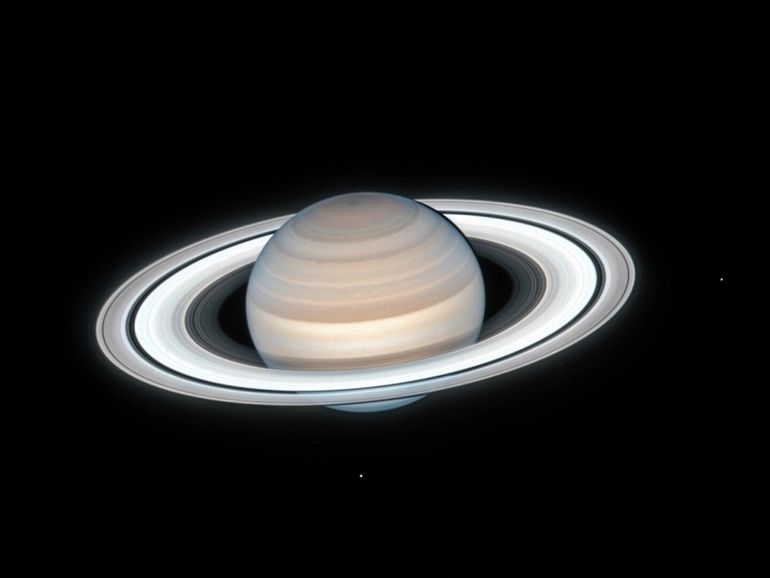NASA Spots Mysterious Rays Moving Along Saturn's Rings

NASA and ESA's Hubble Space Telescope is investigating a "fascinating magic trick of nature".
Something unusual is happening in a new Hubble Space Telescope image of the picturesque ringed planet Saturn. The view is spectacular on its own, but zooming in on the left side of its rings reveals two dark shadowy spots . These are “rays”.
These enigmatic rays appear and disappear according to the seasons. Saturn experiences four seasons , but it takes a long time to go through them, with each season lasting about seven years . The planet will approach the autumnal equinox in its northern hemisphere in early 2025, but it has already entered what NASA calls "ray season." This is the perfect time for Hubble observations to study rays.
Saturn's peculiar magnetic field
Hubble is a joint project of NASA and the European Space Agency. NASA released a video to accompany the new image from Hubble. It includes sequences showing the rays revolving around Saturn .
Scientists discovered the rays - which can appear light or dark depending on the angle - thanks to NASA's Voyager spacecraft in the 1980s. "The cause of the rays, as well as their seasonal variability, has not yet been fully understood. explained by planetary scientists , ” NASA said in a statement Thursday.

The area circled in red highlights the dark spot-like rays of Saturn's rings - NASA, ESA and Amy Simon (NASA-GSFC); image processing by Alyssa Pagan (STScI); red mark by Amanda Kooser/CNET
There is a likely explanation for these strange features, and it involves Saturn's magnetic field .
"Planetary magnetic fields interact with the solar wind, creating an electrically charged environment ," says NASA (which is how we get our pretty auroras on Earth). "Scientists believe that the rings' smaller, dust-sized ice particles can also be charged, causing them to temporarily levitate above the rest of the rings' larger ice particles and rocks." .
If this turns out to be true, the basic recipe for Saturn's rays is: ice particles, varying magnetic field, solar wind, and seasonal changes. The rays are expected to become more prominent as the equinox approaches , giving scientists the opportunity to make more observations and collect data that will explain what is happening.
Other planets in the solar system (the gas giants) have rings, but scientists haven't seen similar radii beyond Saturn. According to Amy Simon, senior planetary scientist at NASA, "it's a fascinating magic trick of nature that we only see on Saturn, at least for now."
Source :websites

